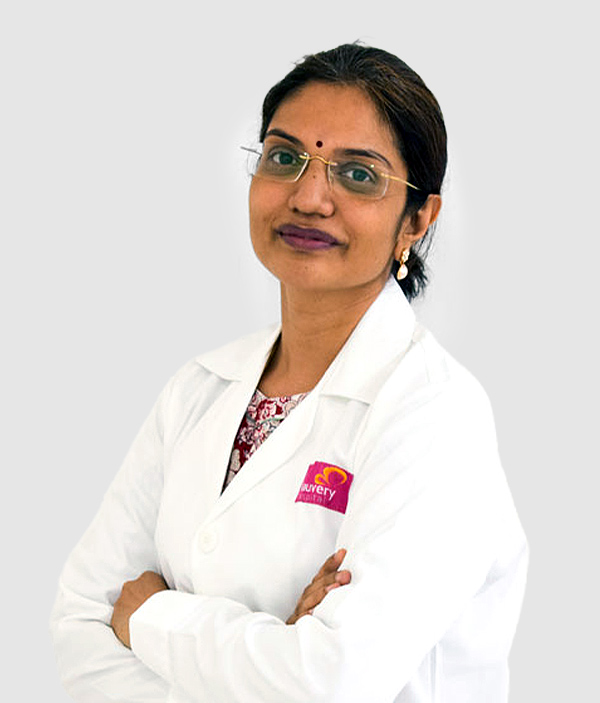
Happy Doctors’ Day dear colleagues.
As a Dental Surgeon and Oral Pathologist at Kauvery Hospital; with State of art infrastructure and multi speciality expertise endows me with robust confidence for the best possible diagnosis and treatment outcome for all of our patients.
Practicing Oral medicine in a hospital based structure with clinical guidance gives a broader outlook, early diagnosis, and better out come to the patients treatment.
An oft-asked question by patients to dentists – “Which brush do I use and where?”
There are several brushes available in the market and it is very confusing as to which will be suitable for an individual.
Choose a brush with soft bristles, and brush to and fro with minimum force to clean all the teeth surfaces twice daily, once when you wake up and once just before you go to bed.
Types of Toothbrushes – When, Where and How?
Electric Toothbrush – Basic tenet of brushing is to ensure good plaque control, which is needed for ensuring healthy gums and teeth. These brushes are rechargeable battery-powered ones; the brush head moves in different directions and vibrates to clean plaque from teeth. Many of these have a built-in timer, which beeps or vibrates to prompt a child/adult to move to a different area of the mouth and there is also an auto shutoff after 2 minutes of brushing. Some brands have a colour-changing bristle that alerts one to change the brush head. One needs to remember that the electric toothbrush needs to be moved to different areas of the mouth for efficient brushing. Powered toothbrushes are especially recommended for patients who lack manual dexterity, and also for those whose hygiene maintenance is in the hands of caregivers.
Orthodontic Toothbrush – These brushes have specially designed bristles to help clean around braces, brackets and wire. These are recommended for patients wearing orthodontic braces.
Denture Cleaning Brush – This brush has a tuft of bristles that helps to clean the concavity in the denture which fits into the gums of patients with no teeth or few missing teeth.
Interdental Brush – This is very useful for patients with gum recession and gaps between teeth. With wear and tear and poor maintenance, spaces develop between teeth (which are normally occupied by gums). Food can get lodged in these spaces which irritates the gums and is one of the causes of decay developing in the sides of teeth. These brushes should be used gently to flush food between teeth.
AI (Artificial Intelligence) Toothbrush – These have sensors to inform you about the pressure used during brushing, alerting you if there is too much pressure. Some brushes also have motion sensors to recognize the brushing style and give real-time feedback.
Baby Toothbrush – These come in a variety of superhero and cartoon characters to encourage brushing. Brushing kids’ teeth can be started as soon as the first teeth appear in the mouth. Until the teeth appear, the gum pads can be wiped with a clean washcloth.
Tips for Brushing
Start with the last teeth in the back of the mouth keeping the mouth closed; run the brush in up and down strokes moving along to the front teeth. This cleans the outer surface of the teeth and the bristles clean in between teeth.
Start by keeping the brush behind the last tooth of the mouth to ensure the back and the cheek surface of the tooth are fully clean.
Wisdom teeth are better reached by using a baby toothbrush. This has a smaller head allowing it to be easily accommodated in the narrow space available. Half close the mouth – this will give more space for the brush head.
Lower front teeth along the tongue surface can be easily brushed by using an up and down motion, 1-2 teeth at a time. This surface collects a lot of tartar because of the salts deposited from saliva pooling on the plaque.
The backs of many brushes available in the market have a rough surface. This can be used to clean the surface of the tongue.
Some companies have brushes sold with caps to cover the bristles for storage. It is best to shake away the remaining water from the brush after use and store it in an upright position without cover for drying to prevent bacteria from growing on the wet surface.
Replace brush every 3 months or earlier if bristles start to fray. Frayed bristles result in less efficient brushing with more force applied to teeth.
It really helps to know and have an awareness of the layout of teeth in your mouth. Many of us may have teeth that are crowded or rotated or teeth that are out of alignment. Knowledge of these in your mouth will help you master techniques to keep these areas plaque-free and will empower you to take care of your pearly whites!
I have been privileged to be a part of the Kauvery family for the past 8 years now. We have the latest equipment and expertise to provide the best possible care round the clock for our patients. Inter-specialty bonhomie makes my work meaningful, efficient and simple. I find my work extremely fulfilling as I have staff, colleagues and the right kind of managerial environment for my patients to leave my care with a smile lighting up their faces.
Cheers & Keep Smiling!!

Dr. Preeti L. Anand
Senior Dental Surgeon & Implantologist,
Kauvery Hospital Chennai

